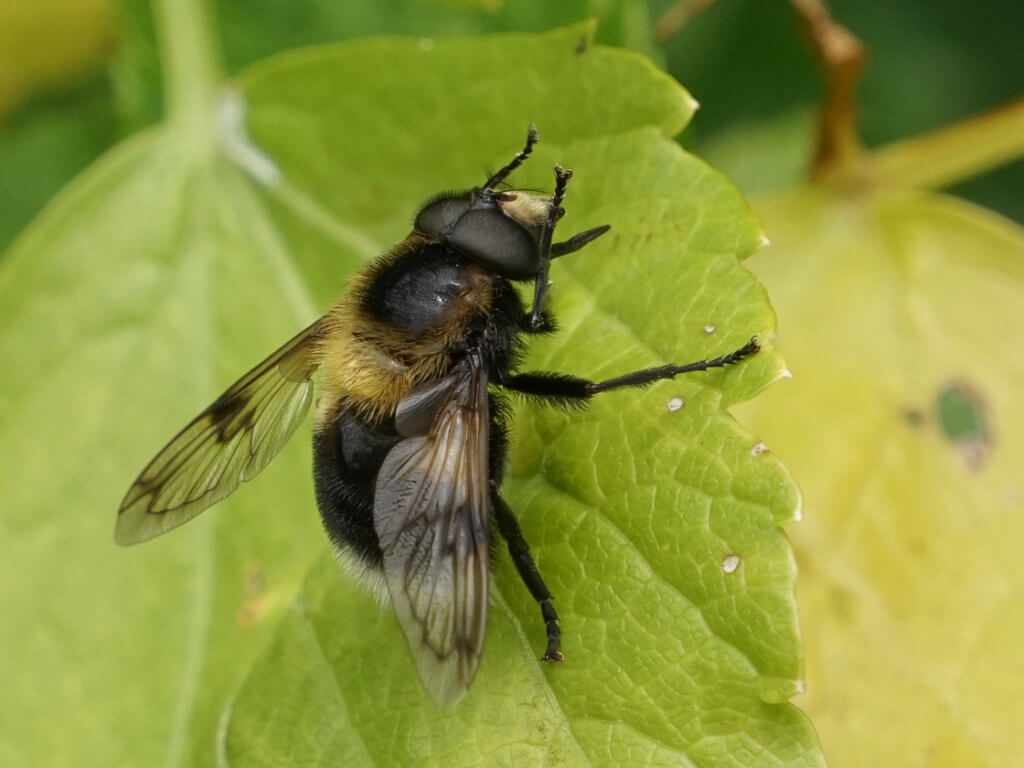
Paul writes: there are several hoverflies which mimic bumblebees, Volucella bombylans is the most common and widespread. It is also probably the cleverest, as it comes in several colour forms to enable it to mimic a number of different species. This one, with its yellow and white markings, goes with the white-tailed bumblebees, whilst another common form is black with a red tail, to go with the red-tailed species.
From a distance they are good mimics but once you get to know them, or see them close up, they are quite different. They lack the bumblebees’ industrious behaviour of constantly flitting between flowers, instead they are quite happy to leaf bathe. Also, the single pair of wings with black markings and feathery antennae are obvious differences.
The female hoverfly uses her likeness to enter a bumblebee nest and lay her eggs. The larvae then feed on debris in the nest and don’t appear to harm the bees themselves. I usually see them from early May, generally anywhere bumblebees are seen, they last throughout the summer. Often the different colour forms can be found in the same area of vegetation. This one was seen in mid June, on the South Downs in East Sussex.
[registration_form]
Great picture as usual Paul. I am not sure you are correct to state that the female uses her resemblance to bumble-bees in order to gain entrance to bumble bee nests, though. There is a link here to an interesting study on mimicry in Volucella: http://ecology.nottingham.ac.uk/~plzfg/syrphweb/Rupp1989.doc?fbclid=IwAR0–BcFXLX-Kw-7WBfnNLBcDjXAz8v-VGFMKN0KnMa9HttAhTrr280x4LI
Amongst the findings reported were that female flies did not select bee nests that matched their own colour morph and also that they entered nests when there were no guards at the entrance – precluding the possibility of visual discrimination by the guards. I believe that bumble bees and honey-bees primarily use olefactory cues to discriminate between hive mates and invaders.
I would think that the selection pressure that maintains the mimicry in these hoverflies is more related to aversion to bees and hornets (V. zonaria is an impressive hornet mimic) by visual predators.
Thanks Jonathan. Looks like an interesting read.